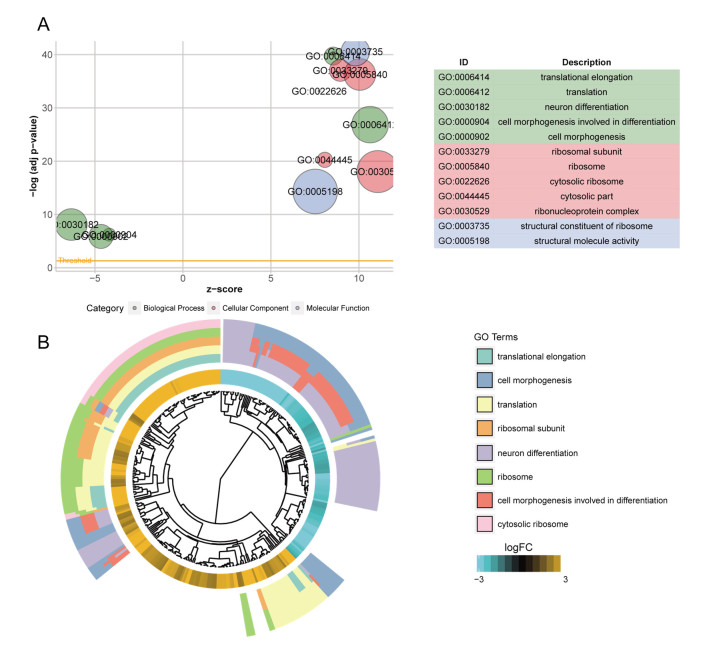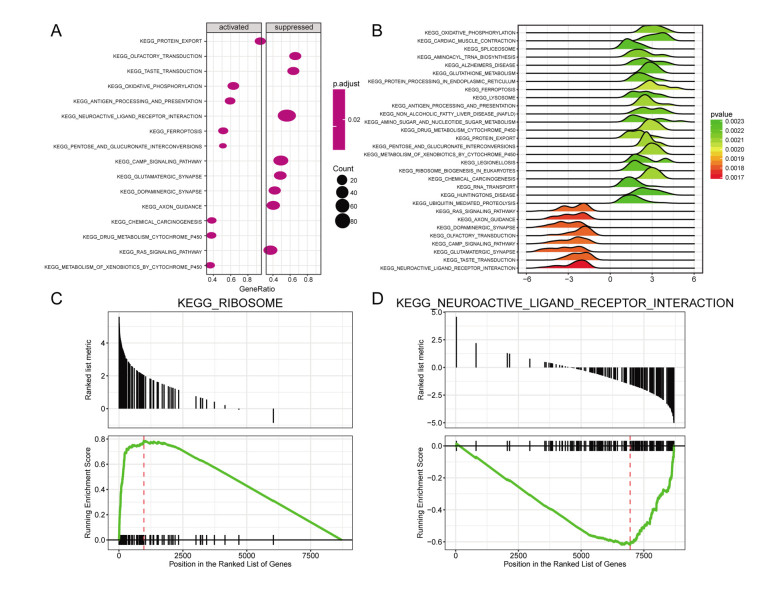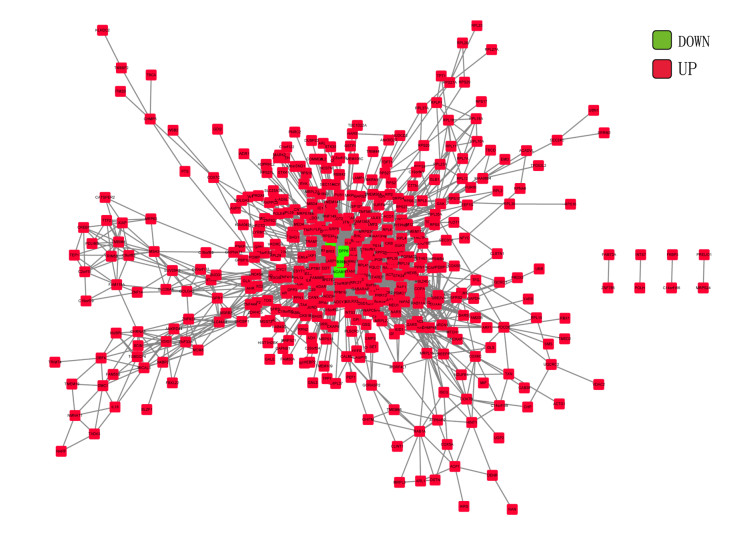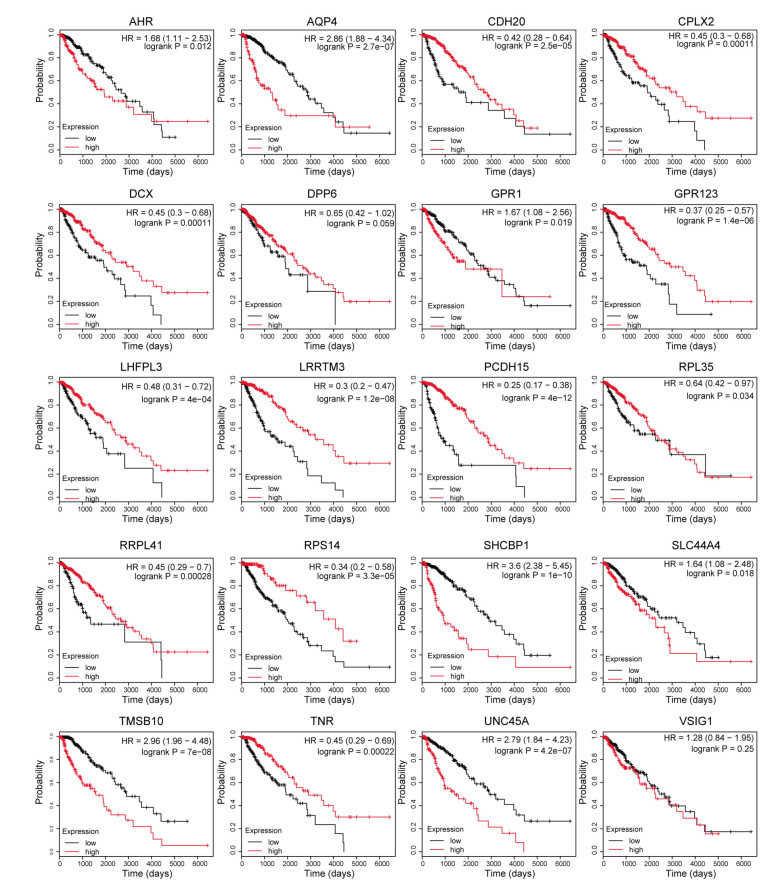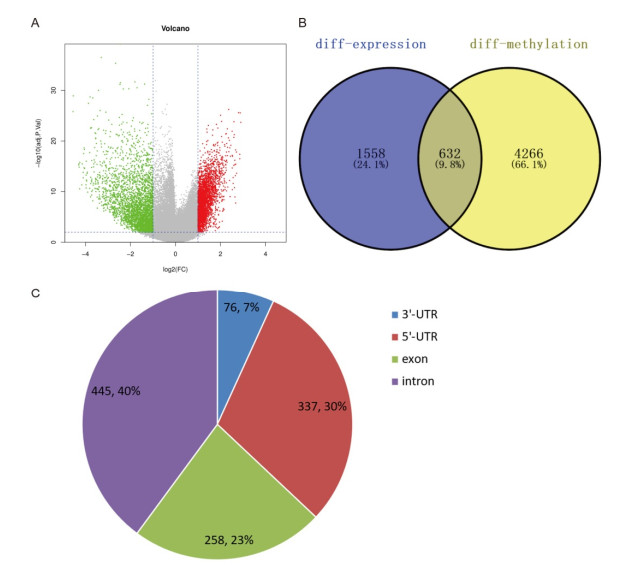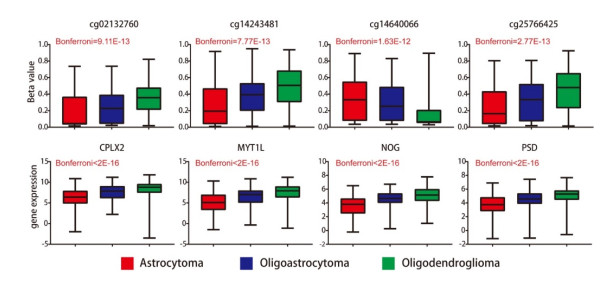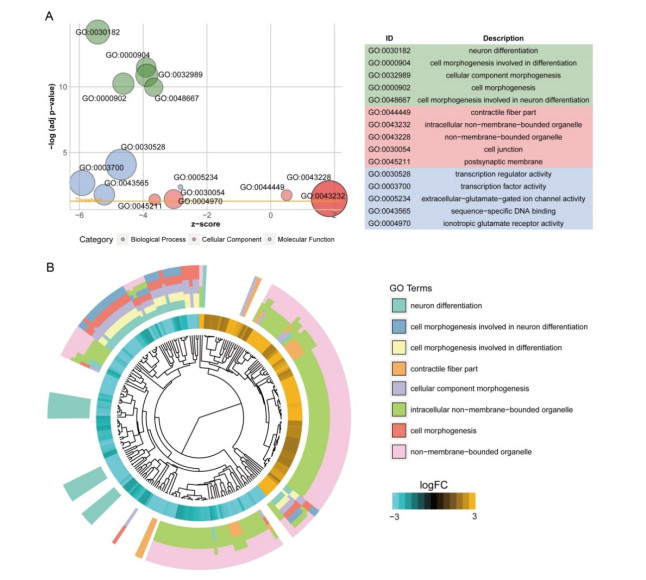| 1.
|
Neelam MANGWANI, Supriya KUMARI, Surajit DAS,
Marine Bacterial Biofilms in Bioremediation of Polycyclic Aromatic Hydrocarbons (PAHs) Under Terrestrial Condition in a Soil Microcosm,
2017,
27,
10020160,
548,
10.1016/S1002-0160(17)60350-3
|
|
| 2.
|
Biji Balan, Amit S. Dhaulaniya, Diksha A. Varma, Kushneet K. Sodhi, Mohit Kumar, Manisha Tiwari, Dileep Kumar Singh,
Microbial biofilm ecology, in silico study of quorum sensing receptor-ligand interactions and biofilm mediated bioremediation,
2021,
203,
0302-8933,
13,
10.1007/s00203-020-02012-9
|
|
| 3.
|
P. Maza-Márquez, A. González-Martínez, M. V. Martínez-Toledo, M. Fenice, A. Lasserrot, J. González-López,
Biotreatment of industrial olive washing water by synergetic association of microalgal-bacterial consortia in a photobioreactor,
2017,
24,
0944-1344,
527,
10.1007/s11356-016-7753-3
|
|
| 4.
|
Anjney Sharma, Hena Jamali, Anukool Vaishnav, Balendu Shekhar Giri, Alok Kumar Srivastava,
2020,
9780444642790,
205,
10.1016/B978-0-444-64279-0.00015-3
|
|
| 5.
|
Vernita Gordon, Layla Bakhtiari, Kristin Kovach,
From molecules to multispecies ecosystems: the roles of structure in bacterial biofilms,
2019,
16,
1478-3975,
041001,
10.1088/1478-3975/ab1384
|
|
| 6.
|
Yeek-Chia Ho, Boon-Chin Lim, Jun-Wei Lim,
2020,
chapter 23,
9781799803690,
550,
10.4018/978-1-7998-0369-0.ch023
|
|
| 7.
|
Rozita Madadi, Kai Bester,
Fungi and biochar applications in bioremediation of organic micropollutants from aquatic media,
2021,
166,
0025326X,
112247,
10.1016/j.marpolbul.2021.112247
|
|
| 8.
|
Tingting Chen, Courtney Philips, Jordan Hamilton, Blaine Chartbrand, Jay Grosskleg, Kris Bradshaw, Trevor Carlson, Karen Timlick, Derek Peak, Steven D. Siciliano,
Citrate Addition Increased Phosphorus Bioavailability and Enhanced Gasoline Bioremediation,
2017,
46,
00472425,
975,
10.2134/jeq2017.02.0064
|
|
| 9.
|
M. K. Mosharaf, M. Z. H. Tanvir, M. M. Haque, M. A. Haque, M. A. A. Khan, A. H. Molla, Mohammad Z. Alam, M. S. Islam, M. R. Talukder,
Metal-Adapted Bacteria Isolated From Wastewaters Produce Biofilms by Expressing Proteinaceous Curli Fimbriae and Cellulose Nanofibers,
2018,
9,
1664-302X,
10.3389/fmicb.2018.01334
|
|
| 10.
|
Meryem Asri, Soumya Elabed, Saad Ibnsouda Koraichi, Naïma El Ghachtouli,
2018,
Chapter 137-1,
978-3-319-58538-3,
1,
10.1007/978-3-319-58538-3_137-1
|
|
| 11.
|
Ranjan Kumar Mohapatra, Saroj Sekhar Behera, Jayanta Kumar Patra, Hrudayanath Thatoi, Pankaj Kumar Parhi,
2020,
9780444642790,
267,
10.1016/B978-0-444-64279-0.00017-7
|
|
| 12.
|
Brabu Balusamy, Omer Faruk Sarioglu, Anitha Senthamizhan, Tamer Uyar,
Rational Design and Development of Electrospun Nanofibrous Biohybrid Composites,
2019,
2,
2576-6422,
3128,
10.1021/acsabm.9b00308
|
|
| 13.
|
Łukasz Jałowiecki, Joanna Żur, Grażyna A. Płaza, B. Kaźmierczak, M. Kutyłowska, K. Piekarska, A. Trusz-Zdybek,
Norfloxacin degradation byBacillus subtilisstrains able to produce biosurfactants on a bioreactor scale,
2017,
17,
2267-1242,
00033,
10.1051/e3sconf/20171700033
|
|
| 14.
|
Vivek Parab, Manju Phadke,
Co-biodegradation studies of naphthalene and phenanthrene using bacterial consortium,
2020,
55,
1093-4529,
912,
10.1080/10934529.2020.1754054
|
|
| 15.
|
Yuan Yao, Olivier Habimana,
Biofilm research within irrigation water distribution systems: Trends, knowledge gaps, and future perspectives,
2019,
673,
00489697,
254,
10.1016/j.scitotenv.2019.03.464
|
|
| 16.
|
Joanna Żur, Danuta Wojcieszyńska, Urszula Guzik,
Metabolic Responses of Bacterial Cells to Immobilization,
2016,
21,
1420-3049,
958,
10.3390/molecules21070958
|
|
| 17.
|
T. Manobala, Sudhir K. Shukla, T. Subba Rao, M. Dharmendira Kumar,
Uranium sequestration by biofilm-forming bacteria isolated from marine sediment collected from Southern coastal region of India,
2019,
145,
09648305,
104809,
10.1016/j.ibiod.2019.104809
|
|
| 18.
|
Meryem Asri, Soumya Elabed, Saad Ibnsouda Koraichi, Naïma El Ghachtouli,
2019,
Chapter 137,
978-3-319-73644-0,
1767,
10.1007/978-3-319-73645-7_137
|
|
| 19.
|
Gashtasb Mardani, Amir Hossein Mahvi, Morteza Hashemzadeh-Chaleshtori, Simin Naseri, Mohammad Hadi Dehghani, Payam Ghasemi-Dehkordi,
Application of Genetically Engineered Dioxygenase Producing Pseudomonas putida on Decomposition of Oil from Spiked Soil,
2017,
In Press,
1735-7780,
10.5812/jjnpp.64313
|
|
| 20.
|
Łukasz Jałowiecki, Joanna Żur, Joanna Chojniak, Helene Ejhed, Grażyna Płaza,
Properties of Antibiotic-Resistant Bacteria Isolated from Onsite Wastewater Treatment Plant in Relation to Biofilm Formation,
2018,
75,
0343-8651,
639,
10.1007/s00284-017-1428-2
|
|
| 21.
|
Feng Yu, Breda Munoz, Paul R. Bienkowski, Gary S. Sayler,
Continuous trichloroethylene biodegradation by
Pseudomonas putida
F1
in a biofilm reactor and determination of an optimal feeding path via a response surface model
,
2021,
2577-8196,
10.1002/eng2.12385
|
|
| 22.
|
Yuxiang Liu, Yueping Li, Xin Yuan, Ruipeng Ren, Yongkang Lv,
A self-prepared graphene oxide/sodium alginate aerogel as biological carrier to improve the performance of a heterotrophic nitrifier,
2021,
1369703X,
108027,
10.1016/j.bej.2021.108027
|
|
| 23.
|
Asifa Farooqi, Ghufranud Din, Rameesha Hayat, Malik Badshah, Samiullah Khan, Aamer Ali Shah,
Characterization of Bacillus nealsonii strain KBH10 capable of reducing aqueous mercury in lab-scale reactor,
2021,
0273-1223,
10.2166/wst.2021.122
|
|
| 24.
|
Moupriya Nag, Dibyajit Lahiri, Dipro Mukherjee, Sayantani Garai, Ritwik Banerjee, Rina Rani Ray,
2021,
Chapter 4,
978-981-16-0744-8,
73,
10.1007/978-981-16-0745-5_4
|
|
| 25.
|
Sandhya Mishra, Yaohua Huang, Jiayi Li, Xiaozhen Wu, Zhe Zhou, Qiqi Lei, Pankaj Bhatt, Shaohua Chen,
Biofilm-mediated bioremediation is a powerful tool for the removal of environmental pollutants,
2022,
294,
00456535,
133609,
10.1016/j.chemosphere.2022.133609
|
|
| 26.
|
Abhishek Kumar Verma, Sucheta Karande, Ankita Mathur,
2022,
9780323899376,
77,
10.1016/B978-0-323-89937-6.00006-1
|
|
| 27.
|
M. Z. I. Mollah, H. M. Zahid, Z. Mahal, Mohammad Rashed Iqbal Faruque, M. U. Khandaker,
The Usages and Potential Uses of Alginate for Healthcare Applications,
2021,
8,
2296-889X,
10.3389/fmolb.2021.719972
|
|
| 28.
|
Daniela Negrete-Bolagay, Camilo Zamora-Ledezma, Cristina Chuya-Sumba, Frederico B. De Sousa, Daniel Whitehead, Frank Alexis, Victor H. Guerrero,
Persistent organic pollutants: The trade-off between potential risks and sustainable remediation methods,
2021,
300,
03014797,
113737,
10.1016/j.jenvman.2021.113737
|
|
| 29.
|
Shobha Upreti, Vinita Gouri, Veni Pande, Diksha Sati, Garima Tamta, Satish Chandra Pandey, Mukesh Samant,
2023,
9780323916431,
263,
10.1016/B978-0-323-91643-1.00001-6
|
|
| 30.
|
Pankaj Bhatt, Kalpana Bhatt, Yaohua Huang, Jiayi Li, Siyi Wu, Shaohua Chen,
Biofilm formation in xenobiotic-degrading microorganisms,
2022,
0738-8551,
1,
10.1080/07388551.2022.2106417
|
|
| 31.
|
Mohammad Ali Zahed, Mohammad Ali Matinvafa, Aryandokht Azari, Leila Mohajeri,
Biosurfactant, a green and effective solution for bioremediation of petroleum hydrocarbons in the aquatic environment,
2022,
2,
2730-647X,
10.1007/s43832-022-00013-x
|
|
| 32.
|
Sonika Phian, Shilpi Nagar, Jasleen Kaur, Charu Dogra Rawat,
2022,
9780323904520,
47,
10.1016/B978-0-323-90452-0.00026-8
|
|
| 33.
|
Petronela Cozma, Raluca-Maria Hlihor, Mihaela Rosca, Isabela-Maria Simion, Maria Apostol, Maria Gavrilescu,
2021,
Progress in Microbial Bioremediation of Industrial Effluents using Different Bioreactors Design: an Overview,
978-1-6654-4000-4,
1,
10.1109/EHB52898.2021.9657749
|
|
| 34.
|
Alka Dwevedi,
2021,
9780128192061,
105,
10.1016/B978-0-12-819206-1.00002-8
|
|
| 35.
|
Prerna J. Yesankar, Asifa Qureshi, Hemant J. Purohit,
2022,
9780323854559,
441,
10.1016/B978-0-323-85455-9.00025-4
|
|
| 36.
|
Basma A. Omran,
2022,
9780323899383,
121,
10.1016/B978-0-323-89938-3.00007-4
|
|
| 37.
|
ZhiHui Xiong, JinWei Zheng, HaiRong Sun, JingWen Hu, XiaFang Sheng, LinYan He,
Biofilm-overproducing Bacillus amyloliquefaciens P29ΔsinR decreases Pb availability and uptake in lettuce in Pb-polluted soil,
2022,
302,
03014797,
114016,
10.1016/j.jenvman.2021.114016
|
|
| 38.
|
Trinath Biswal, Junaid Ahmad Malik,
2022,
9780323904520,
205,
10.1016/B978-0-323-90452-0.00016-5
|
|
| 39.
|
Tibor Benedek, Flóra Szentgyörgyi, Veronika Gergócs, Ofir Menashe, Perla Abigail Figueroa Gonzalez, Alexander J. Probst, Balázs Kriszt, András Táncsics,
Potential of Variovorax paradoxus isolate BFB1_13 for bioremediation of BTEX contaminated sites,
2021,
11,
2191-0855,
10.1186/s13568-021-01289-3
|
|
| 40.
|
Rajalakshmi Sridharan, Veena Gayathri Krishnaswamy,
2022,
9780323856577,
449,
10.1016/B978-0-323-85657-7.00018-3
|
|
| 41.
|
Senelisile Moyo, Bukisile P. Makhanya, Pinkie E. Zwane,
Use of bacterial isolates in the treatment of textile dye wastewater: A review,
2022,
8,
24058440,
e09632,
10.1016/j.heliyon.2022.e09632
|
|
| 42.
|
T. Savitha, Ashraf Y.Z. Khalifa, A. Sankaranarayanan,
2022,
9780323909587,
371,
10.1016/B978-0-323-90958-7.00028-5
|
|
| 43.
|
Amrita Jasu, Rina Rani Ray,
Biofilm mediated strategies to mitigate heavy metal pollution: A critical review in metal bioremediation,
2021,
37,
18788181,
102183,
10.1016/j.bcab.2021.102183
|
|
| 44.
|
Zhong Li, Xinyu Wang, Jie Wang, Xinyi Yuan, Xiaoyu Jiang, Yanyi Wang, Chao Zhong, Dake Xu, Tingyue Gu, Fuhui Wang,
Bacterial biofilms as platforms engineered for diverse applications,
2022,
57,
07349750,
107932,
10.1016/j.biotechadv.2022.107932
|
|
| 45.
|
Tanushri Chatterji, Sunil Kumar,
2022,
9780128243169,
399,
10.1016/B978-0-12-824316-9.00019-7
|
|
| 46.
|
Jayesh M. Sonawane, Ashutosh Kumar Rai, Minaxi Sharma, Manikant Tripathi, Ram Prasad,
Microbial biofilms: Recent advances and progress in environmental bioremediation,
2022,
824,
00489697,
153843,
10.1016/j.scitotenv.2022.153843
|
|
| 47.
|
Arunima Bhattacharjee, Priya Khadgawat, Abhinav Suresh, Jolly Thomas, Gayatri Brahmandam, Pragati Singh, Ashutosh Kumar,
2022,
9780323858397,
451,
10.1016/B978-0-323-85839-7.00005-0
|
|
| 48.
|
Rui GUO, Shuai Chen,
2022,
Recent advance of biofilm mediated polycyclic aromatic hydrocarbons (PAHs) degradation,
9781510657205,
12,
10.1117/12.2646029
|
|
| 49.
|
Gloria Silva-Castro, Alfonso Rodríguez-Calvo, Tatiana Robledo-Mahón, Elisabet Aranda, Jesús González-López, Concepción Calvo,
Design of Bio-Absorbent Systems for the Removal of Hydrocarbons from Industrial Wastewater: Pilot-Plant Scale,
2021,
9,
2305-6304,
162,
10.3390/toxics9070162
|
|
| 50.
|
Violeta D. Jakovljević, Ivana D. Radojević, Sandra M. Grujić, Aleksandar M. Ostojić,
Response of selected microbial strains and their consortia to the presence of automobile paints: Biofilm growth, matrix protein content and hydrolytic enzyme activity,
2022,
29,
1319562X,
103347,
10.1016/j.sjbs.2022.103347
|
|
| 51.
|
Hafiz Zeshan Wadood, Arshia Latif, Hadia Mukhtar, Maryam Javed, Hamid Mukhtar, Yasir Rehman,
Planktonic cells of Staphylococcus and Bacillus species capable of faster chromium reduction in short incubation times as compared to their biofilms,
2021,
14,
1866-7511,
10.1007/s12517-021-08226-5
|
|
| 52.
|
Gabriele Meroni, Simona Panelli, Gianvincenzo Zuccotti, Claudio Bandi, Lorenzo Drago, Dario Pistone,
Probiotics as Therapeutic Tools against Pathogenic Biofilms: Have We Found the Perfect Weapon?,
2021,
12,
2036-7481,
916,
10.3390/microbiolres12040068
|
|
| 53.
|
Tanvi Govil, Saveena Solanki, Zachary Hogan, Sudhir Kumar, David R. Salem, Rajesh K Sani,
2022,
Chapter 7,
978-981-16-3851-0,
165,
10.1007/978-981-16-3852-7_7
|
|
| 54.
|
T.T. Dele-Afolabi, M.A. Azmah Hanim, O.J. Ojo-Kupoluyi, E.O. Atoyebi,
2023,
9780323916776,
593,
10.1016/B978-0-323-91677-6.00025-8
|
|
| 55.
|
Atif Aziz Chowdhury, Nilendu Basak, Ekramul Islam,
Removal of uranium from water using biofilm of uranium sensitive Methylobacterium sp.,
2023,
27724166,
100296,
10.1016/j.hazadv.2023.100296
|
|
| 56.
|
Ayushi Sharma, Sahil Dhiman,
2023,
Chapter 7,
978-981-99-2434-9,
101,
10.1007/978-981-99-2435-6_7
|
|
| 57.
|
A. P. Henagamage, C. M Peries,
Degradation and decolorization of textile azo dyes by effective fungal-bacterial consortium,
2023,
50,
0301-4851,
8901,
10.1007/s11033-023-08741-6
|
|
| 58.
|
Gabriela Petroceli‐Mota, Emilane Pinheiro da Cruz Lima, Mariana Miranda de Abreu, Glacielen Ribeiro de Souza, Jussara Tamires de Souza Silva, Gabriel Quintanilha‐Peixoto, Alessandro Coutinho Ramos, Rachel Ann Hauser‐Davis, Aline Chaves Intorne,
2024,
9781119851127,
65,
10.1002/9781119851158.ch5
|
|
| 59.
|
Patricia L. Abdian, Miguel Cámara, Fabricio D. Cassan, Gabriel Castrillo, Marisa Díaz, Gustavo Gonzalez Anta, Claire Hodge, Jo Slater-Jefferies, Cait E. MacPhee, Enzo Moriconi, Paulina D. Rakowska, Rasmita Raval, Duncan Ross, Juan F. Sandoval, Diego O. Serra, Claudio Valverde, Jeremy Webb, Ana Winters,
Creating pathways for collaboration between Argentina and the UK to utilise microbial biofilms in sustainable agriculture,
2024,
5,
2662-4044,
10.1186/s43170-024-00227-0
|
|
| 60.
|
Savvas Genitsaris, Natassa Stefanidou, Dimitris Hatzinikolaou, Polyxeni Kourkoutmani, Evangelia Michaloudi, Dimitra Voutsa, Meritxell Gros, Elisa García‐Gómez, Mira Petrović, Leonidas Ntziachristos, Maria Moustaka‐Gouni,
Marine Microbiota Responses to Shipping Scrubber Effluent Assessed at Community Structure and Function Endpoints,
2024,
43,
0730-7268,
1012,
10.1002/etc.5834
|
|
| 61.
|
Shabnam Murshid, AdithyaJoseph Antonysamy, GnanaPrakash Dhakshinamoorthy, Arun Jayaseelan, Arivalagan Pugazhendhi,
A review on biofilm-based reactors for wastewater treatment: Recent advancements in biofilm carriers, kinetics, reactors, economics, and future perspectives,
2023,
892,
00489697,
164796,
10.1016/j.scitotenv.2023.164796
|
|
| 62.
|
Meryem Asri, Redouane Ouafi, Soumya Elabed, Wifak Bahafid, Saad Ibnsouda Koraichi, Teresa Tavares, Naïma El Ghachtouli,
Wickerhamomyces anomalus biofilm supported on wood husk and zeolite 13X for the treatment of chromium in aqueous solutions and a tannery effluent,
2023,
306,
19443986,
39,
10.5004/dwt.2023.29611
|
|
| 63.
|
Priyaragini Singh, Priya Rani, Kotnees Dinesh Kumar, Rakesh Kumar,
Elucidating Furfuryl Alcohol Degradation by Pseudomonas Species and Biokinetic Study,
2024,
32,
1566-2543,
4496,
10.1007/s10924-024-03259-9
|
|
| 64.
|
Surajit Das, Trisnehi Pradhan, Sourav Kumar Panda, Abhaya Dayini Behera, Swetambari Kumari, Souradip Mallick,
Bacterial biofilm-mediated environmental remediation: Navigating strategies to attain Sustainable Development Goals,
2024,
370,
03014797,
122745,
10.1016/j.jenvman.2024.122745
|
|
| 65.
|
Preethy Chandran, Sneha Suresh, Balamuralikrishnan Balasubramain, Jaya Gangwar, Asha S. Raj, U. L. Aarathy, Arun Meyyazhagan, Manikantan Pappuswamy, Joseph Kadanthottu Sebastian,
Biological treatment solutions using bioreactors for environmental contaminants from industrial waste water,
2023,
2731-6734,
10.1007/s43994-023-00071-4
|
|
| 66.
|
Aarathy Udayakumar Latha, Sajna Peediyakkathodi, Preethy Chandran,
Multi-metal resistance and antibiotic susceptibility of biofilm forming bacteria isolated from Kuzhikandam Creek in Kochi, southwest part of India,
2024,
1088-9868,
1,
10.1080/10889868.2024.2423650
|
|
| 67.
|
Rajnish Kumar Verma, Yogita Bohra, Ajay Kumar Gautam, Subhi Avasthi, Deepali Ashok,
2023,
9780323990431,
253,
10.1016/B978-0-323-99043-1.00001-3
|
|
| 68.
|
Pinki Saini, Pragya Mishra,
2024,
Chapter 5,
978-3-031-63843-5,
87,
10.1007/978-3-031-63844-2_5
|
|
| 69.
|
Cecilia Andreu, Marcel·lí del Olmo,
Biotechnological applications of biofilms formed by osmotolerant and halotolerant yeasts,
2023,
107,
0175-7598,
4409,
10.1007/s00253-023-12589-y
|
|
| 70.
|
Meryem Asri, Redouane Ouafi, Wifak Bahafid, Soumya Elabed, Saad Ibnsouda Koraichi, Filomena Costa, Teresa Tavares, Naïma El Ghachtouli,
Chromium removal by newly developed microbial consortia supported on wood husk,
2023,
289,
19443986,
80,
10.5004/dwt.2023.29342
|
|
| 71.
|
Elizaveta I. Pokhodnya, I. Onyusheva, D. Markovich, Z. Khussainova, L. Sembieva,
Utilizing contaminated fallen leaves for artificial soil creation in urban green spaces,
2024,
592,
2267-1242,
05008,
10.1051/e3sconf/202459205008
|
|
| 72.
|
Chaitali Chanda, Shaon Ray Chaudhuri, Indranil Mukherjee,
2024,
Chapter 4,
978-981-97-3457-3,
81,
10.1007/978-981-97-3458-0_4
|
|
| 73.
|
Argajit Sarkar, Surajit Bhattacharjee,
Biofilm-mediated bioremediation of xenobiotics and heavy metals: a comprehensive review of microbial ecology, molecular mechanisms, and emerging biotechnological applications,
2025,
15,
2190-572X,
10.1007/s13205-025-04252-2
|
|
| 74.
|
Tsvetozara Damyanova, Tsvetelina Paunova-Krasteva,
What We Still Don’t Know About Biofilms—Current Overview and Key Research Information,
2025,
16,
2036-7481,
46,
10.3390/microbiolres16020046
|
|
| 75.
|
Masoud Aman Mohammadi, Adel Mirza Alizadeh, Samira Dakhili, Safa Kooki, Seyede Marzieh Hosseini,
Bacterial Nanocellulose: A Sustainable Revolution in Food Science,
2025,
6,
2666-3066,
10.1002/efd2.70080
|
|
| 76.
|
Honeymol K. Paulson, Emmanuel Simon, Supriya Radhakrishnan, Denoj Sebastian,
Enterobacter cloacae strain isolated from wastewater, a potential candidate for formulation of bioremediation strategies,
2025,
0033-4545,
10.1515/pac-2024-0341
|
|
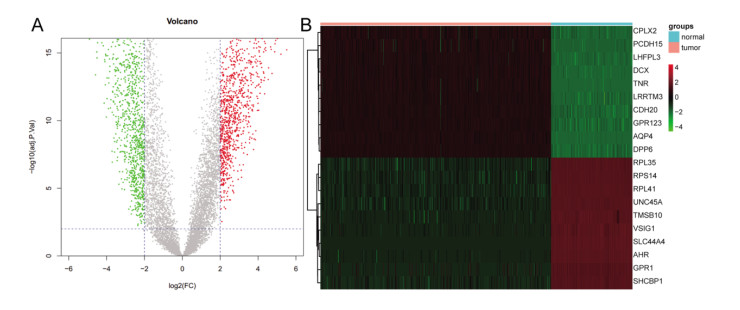









 DownLoad:
DownLoad:
